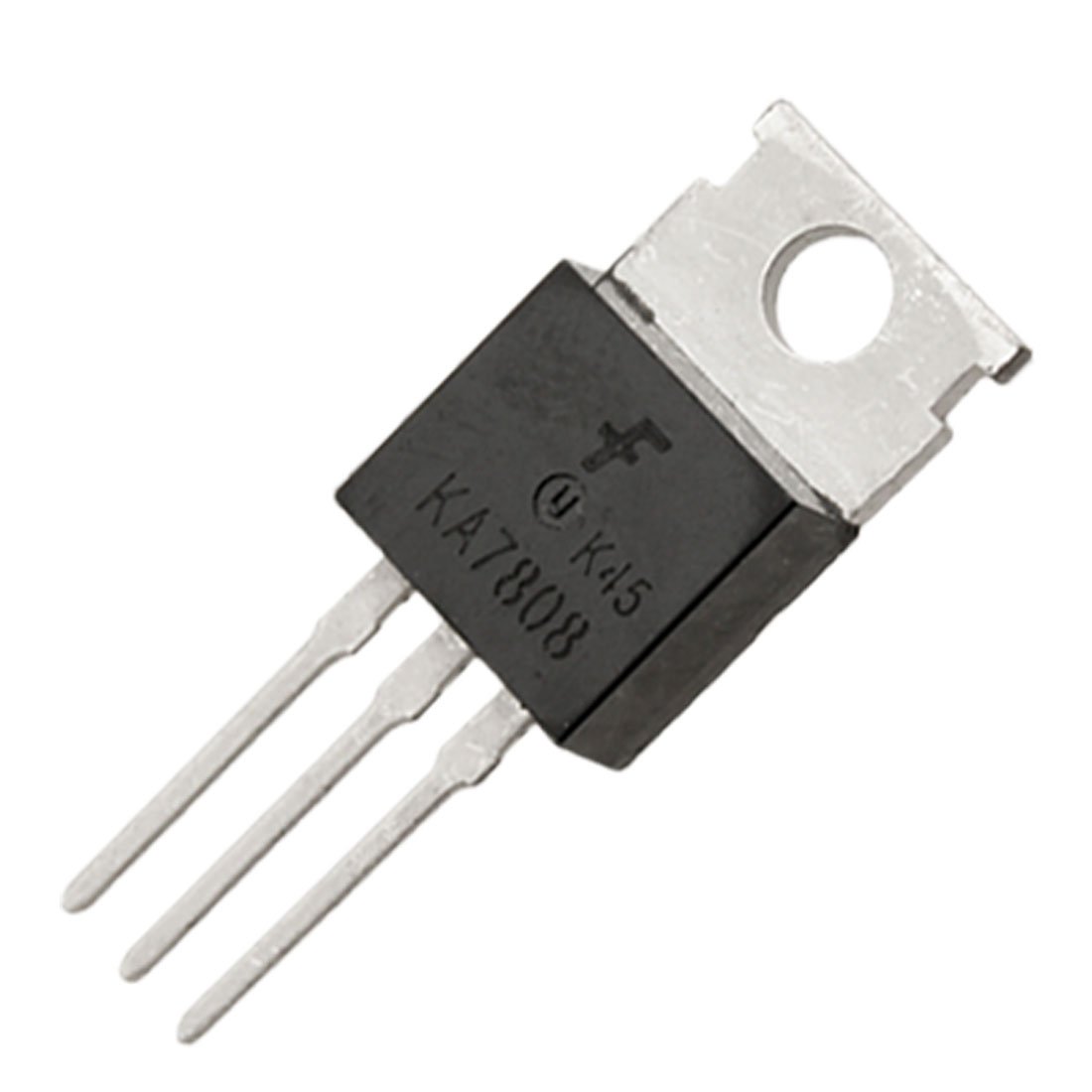first of all, i love the title of this thread! LOL
gashog, it seems that my compatriots have sufficiently slapped you around for using the wrong size fuse, so i will not attempt further slappage.
you say that the radio will turn on, and it sounds like the channel display lights up.
is that right?
if so, there is a chance that you can repair this radio with one part change.
if this doesn't work however, you have just acquired your first parts radio.
if this radio is similar to the 510e, then you should have a 7808 regulator transistor in there somewhere.
i'll attach a picture of one so you'll know what they look like.
there will be at least one more transistor in the radio that looks like it, so be sure you found the one that says 7808 on the front of it.
this is the main 8 volt regulator in the radio, and pretty much nothing will work if it goes bad.
so, once you find it, we will test it.
they are simple. they have an input leg (left leg if you are looking at the front of the transistor) a ground leg (middle), and an output leg (right side if you are looking at the front)
the input leg takes its voltage from the main supply, which is 13.8 volts, and the output leg puts out a regulated 8 volts to power various circuits in the radio.
why is this part needed? because even if the supply voltage drops down to 11 volts or so; the regulator will still put out the regulated 8 volts.
found it yet?
good.
now to test it.
get out your DC volt meter and connect the negative lead to the ground connection on the power jack.
turn the radio on, and put the positive lead on one of the outside legs of the 7808.
if you picked the input leg, you will see the input voltage here, which is usually around 13.8 volts.
if you read the middle leg, you will get 0 volts because it is also grounded.
now read the other outside leg. if the other side was the input, then this leg should read 8 volts.
if it does not, then replace it.
if it does read 8 volts steady, then you are screwed and have a bigger problem than we can guide you through here.
so again, measure the outside legs of the 7808. one side should read 13.8 volts (radio on!) and the other side should read 8 volts.
if it's bad, you can get one at radio shack if there is one open near you, or you can order one off of ebay for a couple of bucks.
best of luck!
LC

